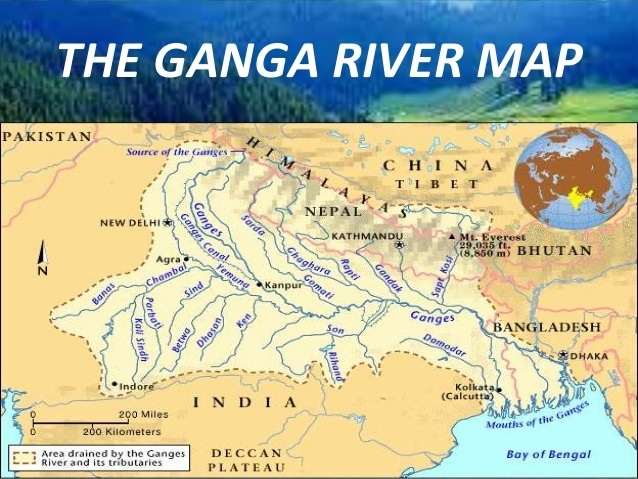Biodiversity & Environment
No Improvement in Ganga Water Quality
- 29 Apr 2020
- 4 min read
Why in News
According to a report published by the Central Pollution Control Board (CPCB), the pollution in Ganga has not reduced significantly during lockdown.
- The CPCB assessed pollution a week before lockdown and weeks after at 36 locations in Uttar Pradesh and West Bengal.
Key Points
- The Dissolved Oxygen (DO) concentration improved marginally.
- There is a gradual increase in Biological Oxygen Demand (BOD) levels towards downstream stretches of the river, with the maximum values in West Bengal.
- There is marginal reduction in Chemical Oxygen Demand (COD) levels which is attributed due to the stoppage of industrial activities.
- The pollution in Ganga is highest in Uttar Pradesh.
- Causes of Pollution: Domestic wastewater from 97 towns situated near river Ganga, and industrial effluents, are the main sources of water pollution in the river.
- There was notable improvement in water quality in the Yamuna.
Dissolved Oxygen
- Dissolved Oxygen is a measure of the amount of free oxygen available in river systems.
- Presence of organic and inorganic wastes in water decreases the dissolved oxygen content of the water.
- A number of factors like surface turbulence, photosynthetic activity, O2 consumption by organisms and decomposition of organic matter are the factors which determine the amount of DO present in water.
- The quality of water increases with an increase in DO levels.
Biochemical Oxygen Demand
- Water pollution by organic wastes is measured in terms of Biochemical Oxygen Demand (BOD).
- BOD is the amount of dissolved oxygen needed by bacteria in decomposing the organic wastes present in water. It is expressed in milligrams of oxygen per litre of water.
- The higher value of BOD indicates low DO content of water.
- Since BOD is limited to biodegradable materials, it is not a reliable method of measuring water pollution.
Chemical Oxygen Demand (COD)
- COD measures the amount of oxygen in parts per million required to oxidise organic (biodegradable and non-biodegradable) and oxidizable inorganic compounds in the water sample.
The Ganga River System
- The headwaters of the Ganga called the ‘Bhagirathi’ is fed by the Gangotri Glacier and joined by the Alaknanda at Devprayag in Uttarakhand.
- At Haridwar, Ganga emerges from the mountains to the plains.
- The Ganga is joined by many tributaries from the Himalayas, a few of them being major rivers such as the Yamuna, the Ghaghara, the Gandak and the Kosi.
- The Ganga bifurcates at Farakka Barrage; the Bhagirathi-Hooghly (a distributary) flows southwards through the deltaic plains to the Bay of Bengal. The mainstream flows southwards into Bangladesh and is joined by the Brahmaputra leading to the Sunderbans Delta.
Central Pollution Control Board
- The Central Pollution Control Board (CPCB) of India is a statutory organisation under the Ministry of Environment, Forest and Climate Change.
- It was established in 1974 under the Water (Prevention and Control of Pollution) Act, 1974.
- The CPCB is also entrusted with the powers and functions under the Air (Prevention and Control of Pollution) Act, 1981.







